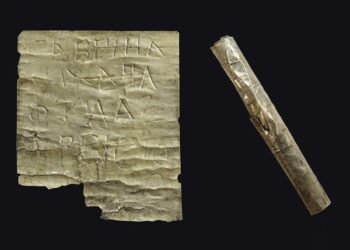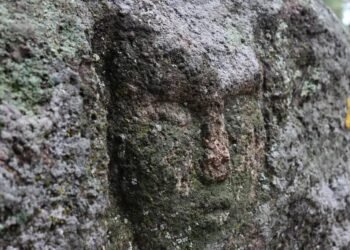The Mysterious Lady, a mummy from the Warsaw Mummy Project’s collection, has recently been the focus of research indicating that she may have had nasopharyngeal cancer, a rare form of cancer.
Found in Thebes (now Luxor), Egypt, in the early 19th century and donated to the University of Warsaw in 1826, the Mysterious Lady’s sarcophagus was opened only recently for study.

Initially presumed to be a male priest based on outer coffin signs, further examination revealed that the mummy was a female from the first century BCE.
The researchers have been particularly interested in the mummy’s head, conducting X-rays and CT scans to create 3D representations of the skull.
These scans revealed potential evidence of nasopharyngeal cancer, including a hole behind the left eye, suggesting a metastatic tumor. While the researchers acknowledge the need for further confirmation, they speculate that if the Mysterious Lady had neoplastic disease, it could have caused her death.
The Mysterious Lady, believed to be from the first century BCE, has been referred to as the world’s first known pregnant mummy. Discovered in Thebes, the mummy was sealed in a sarcophagus.
The recent opening of the sarcophagus revealed a female body, challenging previous assumptions. The examination using tomographic imaging indicated that the woman was between 20 and 30 years old at the time of death and was in the 26th-30th weeks of pregnancy.
The researchers found that the Mysterious Lady suffered from nasopharyngeal cancer, a rare type affecting the throat’s back and nasal cavity. They discovered bone deformities in her skull, potentially indicating tumor changes.
Nasopharyngeal cancers are more common in individuals from East Asia and Africa. Further investigation, including chemical tests and tissue sample analysis, will be conducted to confirm the presence of cancer.
The researchers aim to compare the samples with those from other Egyptian mummies to gain a deeper understanding of cancer evolution. This research could also shed light on the causes of nasopharyngeal cancer, such as viral infection or genetics.
The Warsaw Mummy Project has revealed significant findings about the Mysterious Lady, an ancient Egyptian mummy discovered in Thebes. This research presents a rare opportunity to uncover details about the Mysterious Lady’s life and the cause of her unusual burial.


































Comments 1